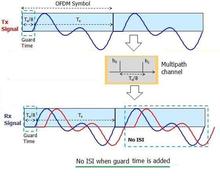
Infrared Sensors: Advantages and Disadvantages
Explore the benefits and drawbacks of using infrared sensors for motion detection, heat measurement, and data communication. Understand limitations like obstructions and range.
Showing 20 posts (Page 15 of 35)
Advertisement

Explore the benefits and drawbacks of using infrared sensors for motion detection, heat measurement, and data communication. Understand limitations like obstructions and range.

Explore the distinctions between Infrared, Visible Light, and Ultraviolet, focusing on their wavelengths, communication distances, advantages, disadvantages, and applications in optical wireless communication.

Understand Insteon RF and Powerline protocol message formats, including standard and extended messages, their fields, and structure for smart home automation.
A comparison of INSTEON and HomePlug technologies, highlighting their specifications, differences in data rate, coexistence, and applications in home automation and networking.

Explore the differences between Insteon and WiFi, focusing on technology, applications, data rates, and network configurations.

Explore the differences between Intelligent Reflecting Surfaces (IRS) and Backscatter technology, including operating mechanisms, duplex capabilities, and hardware costs.
Explore the pros and cons of internet radio, including its features, benefits such as station variety and sound quality, and drawbacks like internet dependency and bandwidth usage.

Explore the key distinctions between invasive and non-invasive brain-computer interfaces (BCIs), including electrode placement, risks, and signal effectiveness.

Explore the distinct architectures, advantages, and disadvantages of IPTV and Internet TV, clarifying their functionalities and infrastructure requirements.
Understand the differences between IPX0 to IPX8 water resistance ratings for electronic devices, crucial for choosing the right protection against water and sweat.

Explore the infrared (IR) spectrum, its subdivisions, and a frequency table for infrared communication, covering wavelengths and applications.
Explore the pros and cons of IrDA technology, including its low cost, security, limitations like line-of-sight requirements, and short range.
Explore the differences between IrDA, WLAN, and Bluetooth. Compare specifications, range, data rates, and applications of these wireless technologies.

Explore the pros and cons of iron-air batteries, a promising technology for grid-scale energy storage due to its cost-effectiveness and safety.

Explains the differences between Inter Symbol Interference (ISI) and Inter Carrier Interference (ICI), focusing on their causes and mitigation techniques in OFDM systems.

Explore the pros and cons of implementing an ISO 9001 Quality Management System (QMS). Understand its benefits, drawbacks, and key considerations.

Explore the benefits of JESD204 interfaces (JESD204B and JESD204C) in terms of speed, size, cost, and features compared to older interfaces.

This article compares JESD204B and JESD204C, highlighting key differences in data rate, encoding, latency, and other features of these high-speed interface specifications.

Explore the pros and cons of laser technology, from high-speed communication to medical treatments, considering its impact, safety, and costs.
Explore the distinctions between LDACS1 and LDACS2, focusing on modulation, duplexing, capacity, and frequency. Understand the core differences between these aeronautical communication systems.
Advertisement